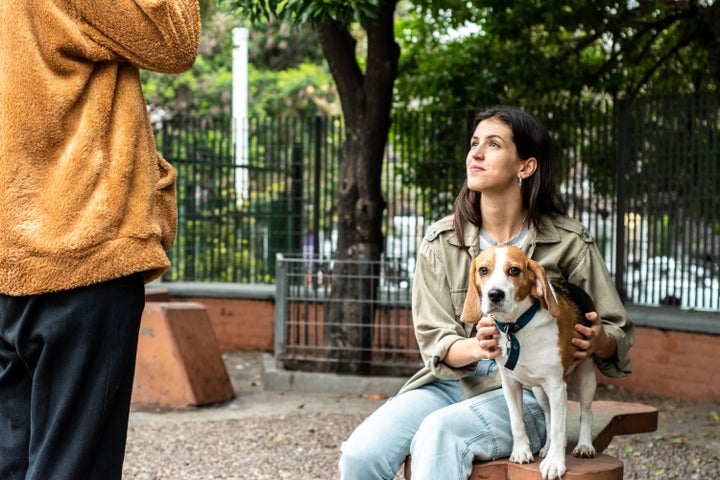There’s definitely a right and wrong way to approach this situation.
This past weekend, X (formerly known as Twitter) user Lynne Schmidt sparked a discussion on the platform when complaining about a 3-year-old child petting her dog Zoë without permission.
Some on social media came out in support of Schmidt’s stance. Others took the opposing position, calling out the tweet for being inconsiderate of little ones who are just learning how to be people in the world. There’s arguably validity in both.
But many dog owners will generally agree that there are boundaries to respect when it comes to a stranger’s interaction with their dog. Not only is this for the comfort of the owner and the pup, but also for the stranger’s potential safety.
“Some dogs will just generally be more happy with petting and cuddling than others,” said Lorna Winter, co-founder of puppy training app Zigzag and director of the UK Dog Behavior and Training Charter. “This could be due to how they were raised, how much interaction they have had with people and strangers, genetics and breed. All these things will play a role.”
While every dog is different, there are some basic approaches both dog owners and strangers should know. Below are some general rules to follow when it comes to interacting with a dog in public:
Always ask a guardian if approaching a dog is OK.
Winter explained that petting “could lead to either stress for the dog, and/or an escalation into either growing or snapping if the dog feels like it cannot get away from the situation.” As a result, it’s “never advised” to pet a dog without at least asking the owner if it is OK.
Even more specifically, the expert noted how the average person may not be able to fully understand and recognize a dog’s body language or communication skills, which is why communicating with the owner is essential.
“Too often we see videos and images of people petting or hugging dogs, where the dogs are clearly very uncomfortable with it, but we see comments all saying ‘ahh’ and ‘isn’t that lovely,’” Winter said.
Ali Smith, a dog trainer and the CEO and founder of Rebarkable, also stresses the importance of asking before petting.
“Dogs are not public property. They might be cute, they might be huge and melt your heart, but most dogs don’t want to be lavished with attention,” she said. “Some do, absolutely, but ask their guardian before approaching.”
After you get permission, keep an eye on the dog’s body language.
Once again, every puppy is created differently but there are some general signs that will help identify a dog’s feelings about a situation.
“Clear signals that dogs aren’t happy with being petted involve their hair being raised along their backs and heads, having their tail between their legs, laying low with their ears pricked back,” Winter explained. “Even a twitch backwards is often a sign that they are uncomfortable.”
Generally speaking, the animal’s own preference is what should be taken into account most prominently. “The big issue is that the expectation is that a dog should want or like to be touched,” Winter said. “But not all dogs do.”
“For example, golden retrievers usually love being pet on the head whereas some others can be quite head shy,” Smith said. “Not to mention that some breeds are naturally standoff-ish, and worse, if you pet a deaf dog who doesn’t know you’re there? They may simply react to what’s perceived as a threat.”

Be gentle and slow when you pet the new dog.
Approach slowly, gently reaching out to the dog’s shoulder or back side, Winter said. It is preferable you check with the pet’s human about which body parts the animal is most comfortable being touched.
“Never touch the head unless you are absolutely sure the dog is happy and comfortable for you to do so,” she said.
If you’re an owner with another dog, you should also ask permission for greetings.
Many times, outdoors dog-to-dog interactions can cause the animals to get a bit too excited, run around and even get tangled up in leashes – all things that may cause guardians even more stress. Dogs may also be reactive when it comes to other dogs, or they might be in training and shouldn’t have human or dog interaction.
If the dog moves away, let them and don’t push it.
Animals have their own wants and needs so always give a dog the choice to move away if they choose to do so. Don’t keep petting or reaching for them if you notice they’re backing up. Respecting boundaries – especially the dog’s – will lead to a healthier and safer interaction for everyone.
Credit: Source link